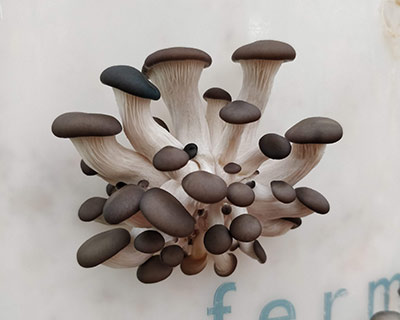How to grow your own mushrooms at home
Mushrooms can be grown on an incredible number of different types of waste products, such as logs, coffee grounds or even cardboard. This makes them remarkably versatile for home growers who can source substrate and get growing depending on what is available to them locally
Mushroom growing boom
Mushrooms are often seen as the province of experienced foragers and mycologists, with amateurs put off by the danger of accidentally picking one of the psilocybin (‘magic’) or potentially fatal types. However, mushroom growing kits have experienced a boom in popularity as they provide an easy introduction in to the seemingly dark art of growing mushrooms at home.
The added bonus of growing mushrooms indoors is that it can be done any time of year – in warmer weather you may need to spray more often. It’s an ideal crop for when your vegetable plot is having a rest.

